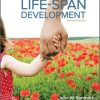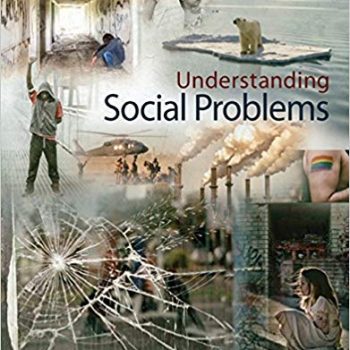Test Bank For A Topical Approach to Lifespan Development 9Th Edition By Santrock
Chapter 02
Test Bank
1. Some species are better adapted to their environment in a way that helps them survive and reproduce, while other species do not adapt well and die. This process is calledA. canalization.B. sociobiology.C. natural selection.D. genetic inheritance.Accessibility: Keyboard NavigationAPA Outcome: 1.1: Describe key concepts, principles, and overarching themes in psychologyAPA Outcome: 1.2: Develop a working knowledge of psychology’s content domainsBloom’s Taxonomy: RememberDifficulty Level: BasicLearning Objective: Discuss the evolutionary perspective on life-span development.Topic: Natural Selection2. Natural selection favors individuals of a species that are best able to _____ and _____.A. survive; reproduceB. find food; hideC. survive change; adaptD. change; adaptAccessibility: Keyboard NavigationAPA Outcome: 1.1: Describe key concepts, principles, and overarching themes in psychologyAPA Outcome: 1.2: Develop a working knowledge of psychology’s content domainsBloom’s Taxonomy: UnderstandDifficulty Level: BasicLearning Objective: Discuss the evolutionary perspective on life-span development.Topic: Natural Selection3. Evolutionary psychology holds thatA. natural selection does not ring true for personality characteristics.B. natural selection favors certain behaviors that increase reproductive success.C. biological evolution explains why humans live well beyond child-bearing years.D. only physical development is stage-like in process.Accessibility: Keyboard NavigationAPA Outcome: 1.1: Describe key concepts, principles, and overarching themes in psychologyAPA Outcome: 1.2: Develop a working knowledge of psychology’s content domainsBloom’s Taxonomy: UnderstandDifficulty Level: BasicLearning Objective: Discuss the evolutionary perspective on life-span development.Topic: Evolutionary Psychology4. Natural selection operates primarily on characteristics that are tied toA. group social interaction.B. psychological wellness.C. reproductive fitness.D. developmental plasticity.Accessibility: Keyboard NavigationAPA Outcome: 1.1: Describe key concepts, principles, and overarching themes in psychologyAPA Outcome: 1.2: Develop a working knowledge of psychology’s content domainsBloom’s Taxonomy: UnderstandDifficulty Level: BasicLearning Objective: Discuss the evolutionary perspective on life-span development.Topic: Natural Selection5. Which of the following statements describes the main idea of David Buss’ theory?A. It is not useful to compare human social behavior with social behavior in other species.B. Evolutionary processes can influence behavior as well as physical features.C. Behavior is determined by the environmental consequences it brings about.D. Development proceeds in a series of stages.Accessibility: Keyboard NavigationAPA Outcome: 1.1: Describe key concepts, principles, and overarching themes in psychologyAPA Outcome: 1.2: Develop a working knowledge of psychology’s content domainsBloom’s Taxonomy: UnderstandDifficulty Level: BasicLearning Objective: Discuss the evolutionary perspective on life-span development.Topic: Evolutionary Psychology6. Which of the following explanations do developmental evolutionary psychologists favor for an extended childhood period in human development?A. During this time, a human’s immune system reaches its full potential.B. A long childhood period is a “left over” adaptation from the time when the human life span was considerably shorter than it is today.C. Rebellion against authority is a necessary step in the evolutionary development of independent behavior.D. During this time, humans develop a large brain and gain experience required to master the complexities of human society.Accessibility: Keyboard NavigationAPA Outcome: 1.1: Describe key concepts, principles, and overarching themes in psychologyAPA Outcome: 1.2: Develop a working knowledge of psychology’s content domainsBloom’s Taxonomy: UnderstandDifficulty Level: ModerateLearning Objective: Discuss the evolutionary perspective on life-span development.Topic: Evolutionary Psychology7. Which of the following statements is NOT an idea held by evolutionary developmental psychologists?A. Evolved characteristics are not always adaptive in contemporary society.B. Some evolved characteristics could be the cause of problems in contemporary society.C. All evolved mechanisms are adaptive in contemporary society.D. An extended childhood period may be the result of evolution.Accessibility: Keyboard NavigationAPA Outcome: 1.1: Describe key concepts, principles, and overarching themes in psychologyAPA Outcome: 1.2: Develop a working knowledge of psychology’s content domainsBloom’s Taxonomy: UnderstandDifficulty Level: ModerateLearning Objective: Discuss the evolutionary perspective on life-span development.Topic: Evolutionary Developmental Psychology8. Baltes holds that natural selection operatesA. primarily during the first half of life.B. primarily during late adulthood.C. through the end of the adolescent period.D. through the end of late childhood.Accessibility: Keyboard NavigationAPA Outcome: 1.1: Describe key concepts, principles, and overarching themes in psychologyAPA Outcome: 1.2: Develop a working knowledge of psychology’s content domainsBloom’s Taxonomy: UnderstandDifficulty Level: BasicLearning Objective: Discuss the evolutionary perspective on life-span development.Topic: Evolution and Life-Span Development9. According to Baltes, older adults have an increasedA. generativity.B. need for culture-based resources.C. benefits of evolutionary selection.D. developmental plasticity.Accessibility: Keyboard NavigationAPA Outcome: 1.1: Describe key concepts, principles, and overarching themes in psychologyBloom’s Taxonomy: UnderstandDifficulty Level: BasicLearning Objective: Discuss the evolutionary perspective on life-span development.Topic: Evolution and Life-Span Development10. A bidirectional view of evolutionism suggests thatA. social behavior is a product of evolved biology.B. evolved biology is a product of social behavior.C. environmental and biological conditions influence each other.D. evolution dictates social behavior.Accessibility: Keyboard NavigationAPA Outcome: 1.1: Describe key concepts, principles, and overarching themes in psychologyAPA Outcome: 1.2: Develop a working knowledge of psychology’s content domainsBloom’s Taxonomy: RememberDifficulty Level: BasicLearning Objective: Discuss the evolutionary perspective on life-span development.Topic: Evolutionary Developmental Psychology11. Which of the following is a double-helix-shaped molecule that contains genetic information?A. chromosomeB. genotypeC. DNAD. geneAccessibility: Keyboard NavigationAPA Outcome: 1.1: Describe key concepts, principles, and overarching themes in psychologyAPA Outcome: 1.2: Develop a working knowledge of psychology’s content domainsBloom’s Taxonomy: RememberDifficulty Level: BasicLearning Objective: Describe what genes are and how they influence human development.Topic: Genes12. Approximately how many genes does a typical human have according to the latest research?A. more than 100,000B. 50,000–75,000C. 35,000–40,000D. around 20,000Accessibility: Keyboard NavigationAPA Outcome: 1.1: Describe key concepts, principles, and overarching themes in psychologyAPA Outcome: 1.2: Develop a working knowledge of psychology’s content domainsBloom’s Taxonomy: RememberDifficulty Level: BasicLearning Objective: Describe what genes are and how they influence human development.Topic: Genes13. What did researchers working on the Human Genome project accomplish?A. They estimated how many genes humans have.B. They determined that many genes are collaborative.C. They found that the number of human proteins is higher than the number of human genes.D. All of these answers are correct.Accessibility: Keyboard NavigationAPA Outcome: 1.1: Describe key concepts, principles, and overarching themes in psychologyAPA Outcome: 1.2: Develop a working knowledge of psychology’s content domainsBloom’s Taxonomy: RememberDifficulty Level: BasicLearning Objective: Describe what genes are and how they influence human development.Topic: Genes14. In his book The Dependent Gene, David Moore reports thatA. genes are collaborative.B. genes act independently.C. genes have a one-to-one correspondence with proteins.D. the expression of genes is not affected by environmental conditions.Accessibility: Keyboard NavigationAPA Outcome: 1.1: Describe key concepts, principles, and overarching themes in psychologyAPA Outcome: 1.2: Develop a working knowledge of psychology’s content domainsBloom’s Taxonomy: RememberDifficulty Level: BasicLearning Objective: Describe what genes are and how they influence human development.Topic: Genes15. Which of the following statements BEST explains the nature of genetic expression?A. A single gene is the source of a single protein’s genetic information.B. Events outside of a cell cannot excite or inhibit genetic expression.C. Only internal events inside a cell can influence genetic expression.D. The activity of genes is affected by the internal and external factors.Accessibility: Keyboard NavigationAPA Outcome: 1.1: Describe key concepts, principles, and overarching themes in psychologyAPA Outcome: 1.2: Develop a working knowledge of psychology’s content domainsBloom’s Taxonomy: UnderstandDifficulty Level: ModerateLearning Objective: Describe what genes are and how they influence human development.Topic: Genes16. Which of the following has 23 unpaired chromosomes?A. zygotesB. the sperm and eggC. mitosisD. chromosomeAccessibility: Keyboard NavigationAPA Outcome: 1.1: Describe key concepts, principles, and overarching themes in psychologyAPA Outcome: 1.2: Develop a working knowledge of psychology’s content domainsBloom’s Taxonomy: RememberDifficulty Level: BasicLearning Objective: Describe what genes are and how they influence human development.Topic: Genes17. In a human body, all cells except the sperm and egg reproduce by a process calledA. meiosis.B. mitosis.C. fertilization.D. zygote.Accessibility: Keyboard NavigationAPA Outcome: 1.1: Describe key concepts, principles, and overarching themes in psychologyAPA Outcome: 1.2: Develop a working knowledge of psychology’s content domainsBloom’s Taxonomy: RememberDifficulty Level: BasicLearning Objective: Describe what genes are and how they influence human development.Topic: Mitosis18. _____ is a specialized form of cell division that occurs to form eggs and sperm.A. MeiosisB. MitosisC. ReproductionD. FertilizationAccessibility: Keyboard NavigationAPA Outcome: 1.1: Describe key concepts, principles, and overarching themes in psychologyAPA Outcome: 1.2: Develop a working knowledge of psychology’s content domainsBloom’s Taxonomy: RememberDifficulty Level: BasicLearning Objective: Describe what genes are and how they influence human development.Topic: Meiosis19. How many chromosomes does an egg or a sperm have?A. 46B. 24C. 23D. 48Accessibility: Keyboard NavigationAPA Outcome: 1.1: Describe key concepts, principles, and overarching themes in psychologyAPA Outcome: 1.2: Develop a working knowledge of psychology’s content domainsBloom’s Taxonomy: RememberDifficulty Level: BasicLearning Objective: Describe what genes are and how they influence human development.Topic: Genes20. Fertilization results in the formation of a(n)A. egg.B. zygote.C. gamete.D. sperm.Accessibility: Keyboard NavigationAPA Outcome: 1.1: Describe key concepts, principles, and overarching themes in psychologyAPA Outcome: 1.2: Develop a working knowledge of psychology’s content domainsBloom’s Taxonomy: RememberDifficulty Level: BasicLearning Objective: Describe what genes are and how they influence human development.Topic: Fertilization21. In _____, the number of cells doubles, whereas in _____, the number of chromosomes in the resulting four cells is half of what the parent cell contained.A. meiosis; mitosisB. mitosis; meiosisC. genotype; phenotypeD. phenotype; genotypeAccessibility: Keyboard NavigationAPA Outcome: 1.1: Describe key concepts, principles, and overarching themes in psychologyAPA Outcome: 1.2: Develop a working knowledge of psychology’s content domainsBloom’s Taxonomy: RememberDifficulty Level: BasicLearning Objective: Describe what genes are and how they influence human development.Topic: MeiosisTopic: Mitosis22. All of a person’s genetic material makes up the _____, whereas the _____ consists of only observable characteristics.A. phenotype; genotypeB. genotype; phenotypeC. dominant genes; recessive genesD. recessive genes; dominant genesAccessibility: Keyboard NavigationAPA Outcome: 1.1: Describe key concepts, principles, and overarching themes in psychologyAPA Outcome: 1.2: Develop a working knowledge of psychology’s content domainsBloom’s Taxonomy: RememberDifficulty Level: BasicLearning Objective: Describe what genes are and how they influence human development.Topic: Genes23. Angela describes her friend as tall and slender with blue eyes and red hair. She is describing her friend’sA. genotype.B. phenotype.C. dominant genes.D. recessive genes.Accessibility: Keyboard NavigationAPA Outcome: 1.2: Develop a working knowledge of psychology’s content domainsAPA Outcome: 1.3: Describe applications of psychologyBloom’s Taxonomy: ApplyDifficulty Level: BasicLearning Objective: Describe what genes are and how they influence human development.Topic: Genes24. You notice that Lou’s eyes are a unique shade of green. You have observed his:A. genotype.B. phenotype.C. dominant genes.D. recessive genes.Accessibility: Keyboard NavigationAPA Outcome: 1.2: Develop a working knowledge of psychology’s content domainsAPA Outcome: 1.3: Describe applications of psychologyBloom’s Taxonomy: UnderstandDifficulty Level: BasicLearning Objective: Describe what genes are and how they influence human development.Topic: Genes25. Which of the following principles is demonstrated when one gene overrides the potential effect of a second gene?A. polygenic inheritanceB. sex-linked genesC. dominant-recessive genesD. genetic imprintingAcc









Reviews
There are no reviews yet.